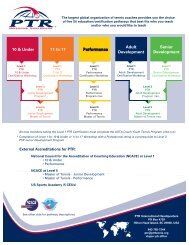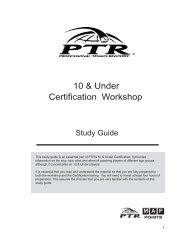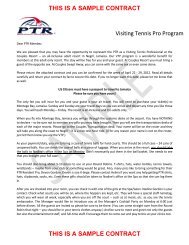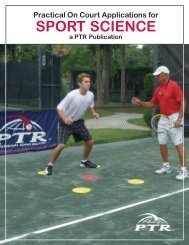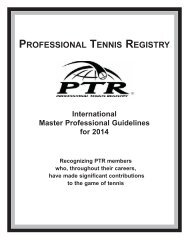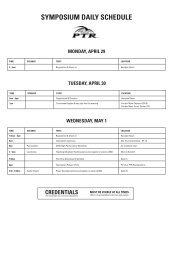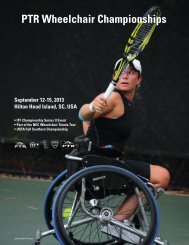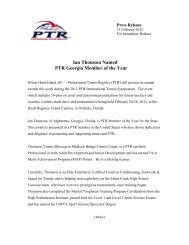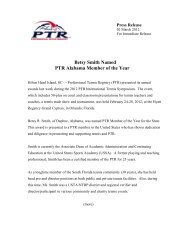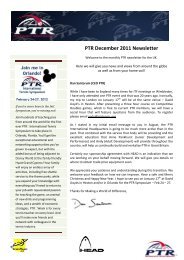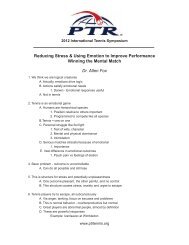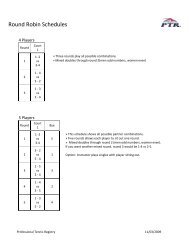Certification Workshop - Professional Tennis Registry
Certification Workshop - Professional Tennis Registry
Certification Workshop - Professional Tennis Registry
You also want an ePaper? Increase the reach of your titles
YUMPU automatically turns print PDFs into web optimized ePapers that Google loves.
GRIPS<br />
Grips are listed as you move clockwise around the grip<br />
• Extreme Eastern Backhand (sometimes called western backhand)<br />
This grip places the index finger knuckle on the left top side bevel (8) of the racquet,<br />
and in some cases the knuckle may even be as far over as the left side bevel (7).<br />
This grip can generate a great amount of topspin and is helpful when playing high<br />
bouncing balls.<br />
• Eastern Backhand<br />
This grip places the index finger knuckle on the top bevel (1) of the racquet which<br />
generally centers the palm on top of the racquet.<br />
• Continental<br />
For this grip, the index finger knuckle is located on the top right side bevel (2).<br />
Typically used for serving and volleys.<br />
• Eastern Forehand<br />
The classic “shake hands” grip. The player’s palm is generally against the right side<br />
bevel of the grip. The index finger knuckle is also resting on the right side bevel (3).<br />
• Semi-western<br />
This grip places the index finger knuckle on the bottom right side bevel (4). This grip<br />
allows players to generate much more topspin than the eastern forehand.<br />
• Western<br />
The index finger knuckle is located on the bottom bevel (5) of the racquet. Players<br />
using this grip can generate a great amount of topspin and often prefer clay courts.<br />
7<br />
8<br />
6<br />
1<br />
5<br />
2<br />
4<br />
3<br />
20 PTR ADULT DEVELOPMENT CERTIFICATION WORKSHOP TEST PREPARATION GUIDE



